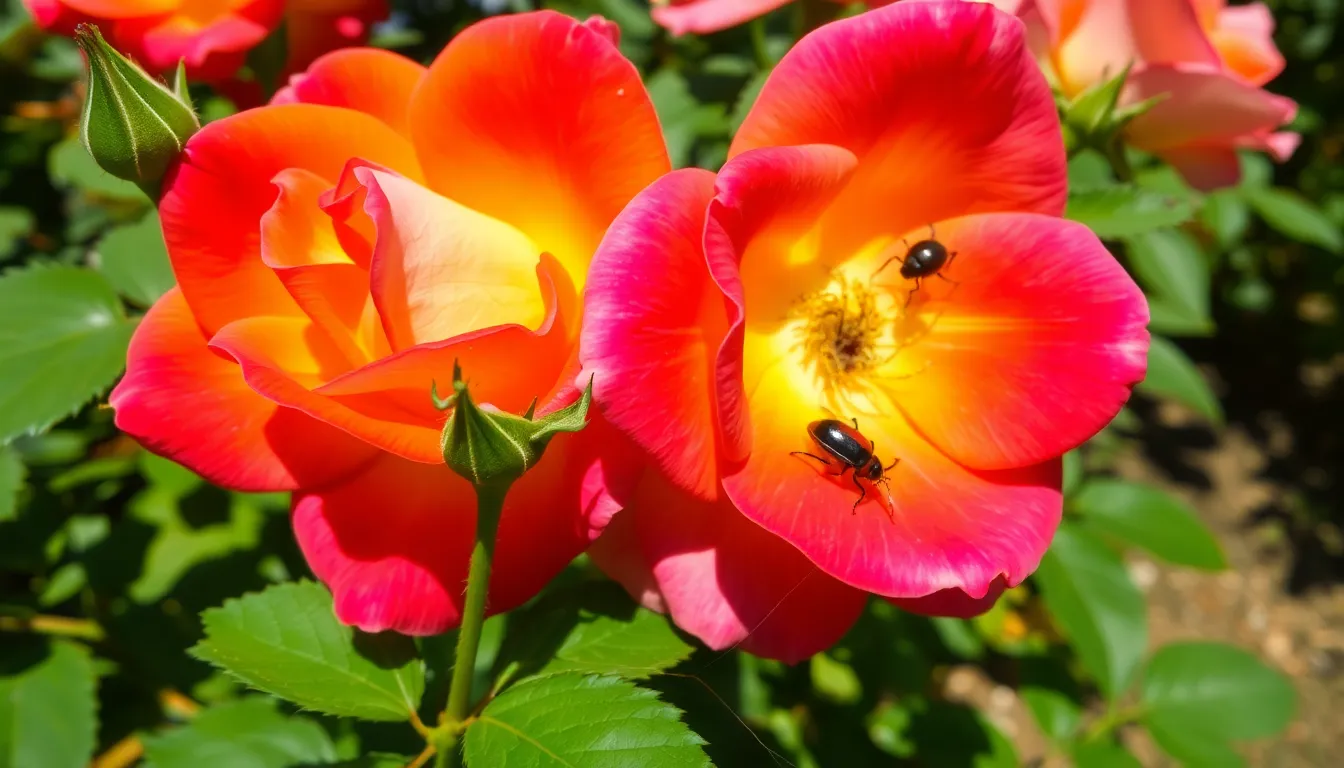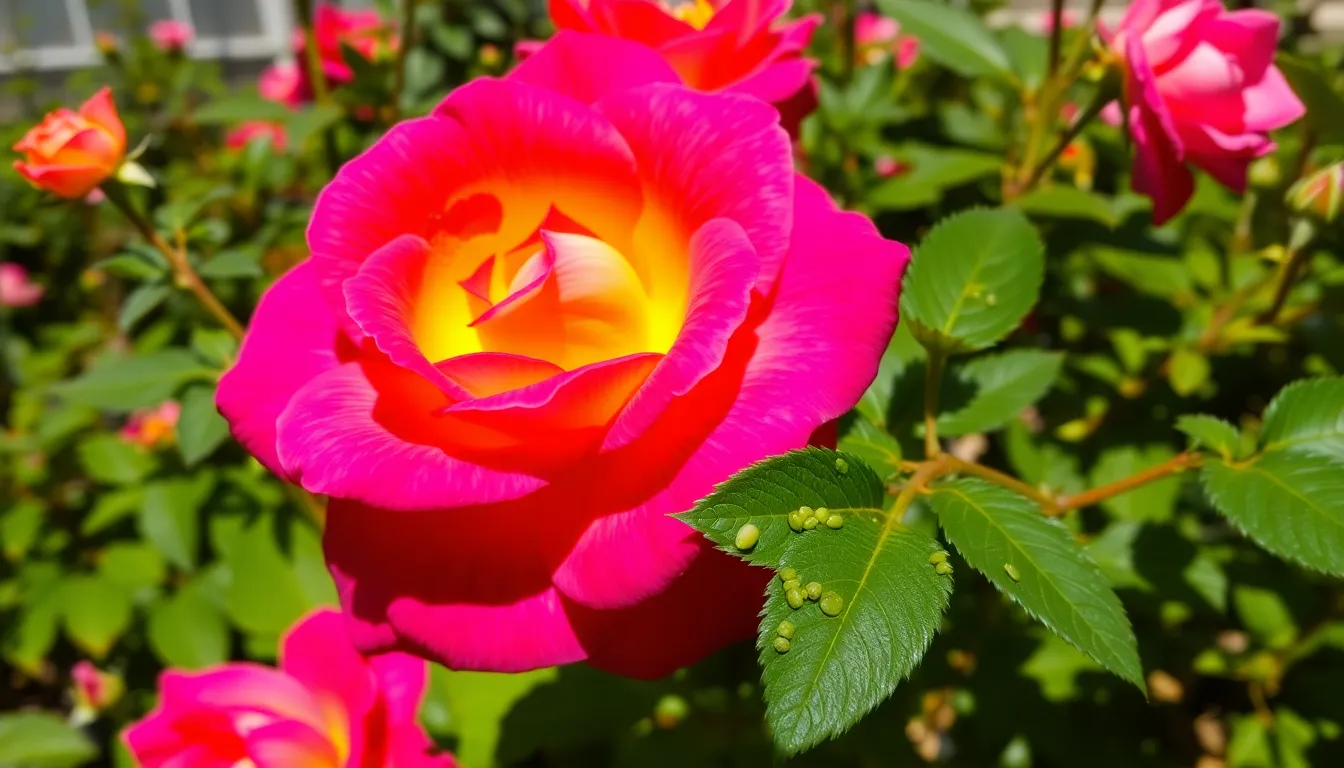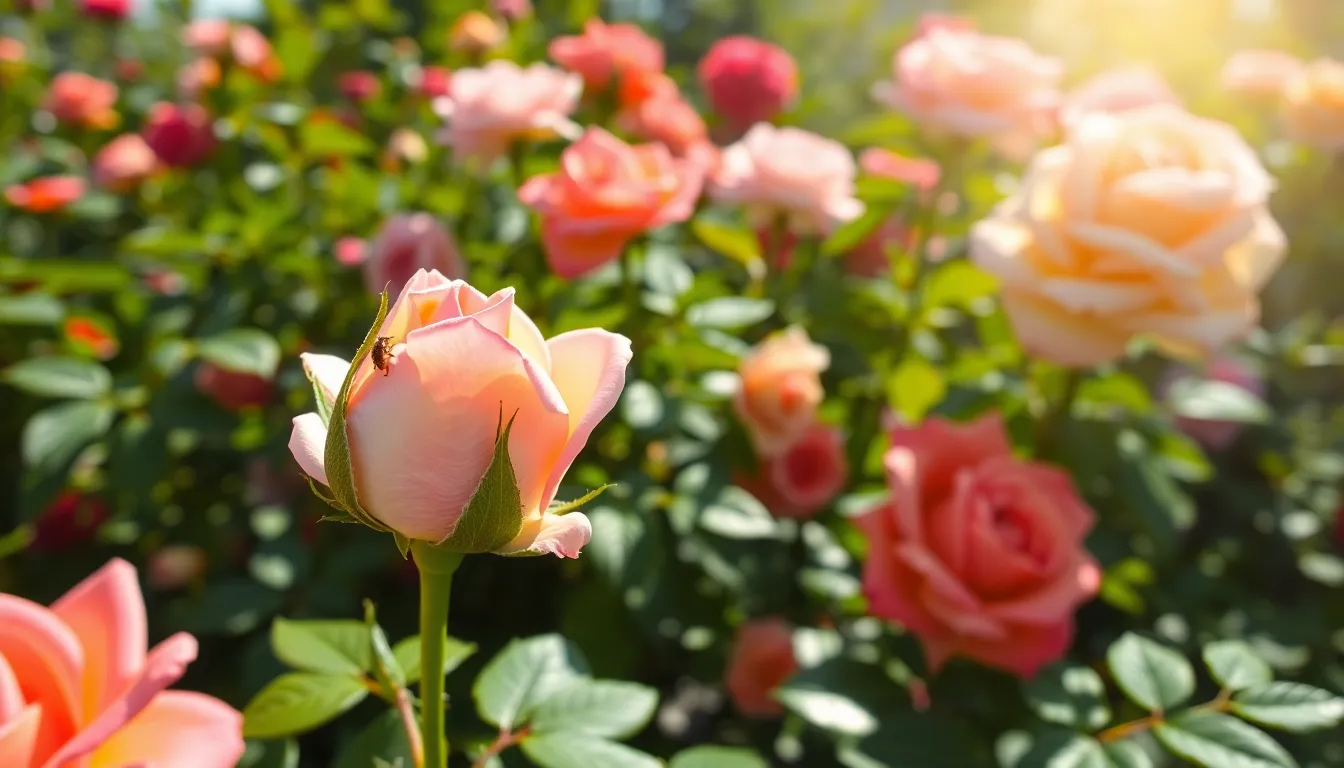Roses are often hailed as the queens of the garden, but even royalty has its foes. Enter the world of rose pests, those sneaky little invaders that threaten to turn a blooming paradise into a battlefield. From aphids that can make a meal out of your petals to spider mites that spin webs of chaos, these tiny tyrants can wreak havoc if left unchecked.
Rose Pests
Rose gardens face threats from various pests that significantly affect plant health. Effective management prevents these pests from inflicting further damage.
Aphids
Aphids are small, soft-bodied insects that infest rose plants. They feed on sap, weakening stems and leaves. Infestations can lead to stunted growth and the spread of diseases. Signs of aphids include curled leaves and sticky residue known as honeydew. Regularly monitoring roses and using insecticidal soap can control their population.
Spider Mites
Spider mites thrive in warm, dry conditions and often go unnoticed until damage occurs. These tiny arachnids create webbing on the underside of leaves while sucking plant juices. Symptoms include yellowing foliage and fine webbing. Keeping plants well-watered and introducing beneficial insects can reduce their presence effectively.
Japanese Beetles
Japanese beetles are metallic green insects that feast on rose petals, leaving skeletonized leaves behind. Infestations peak in summer, when their numbers can rapidly increase. Handpicking beetles or using traps can help manage their population. Neem oil treatments serve as an effective organic option to prevent damage and protect rose plants.
Identification of Rose Pests


Identifying rose pests is crucial for maintaining healthy blooms. This section provides essential insights into visual signs and behavior patterns of common rose pests.
Visual Signs
Aphids appear as tiny green or black insects clustered on new growth. Spider mites cause yellowing leaves and webs, particularly in dry conditions. Japanese beetles leave holes in petals, making roses look ragged. Presence of sticky honeydew indicates aphids or sooty mold, a result of their feeding. Additionally, discolored or curled leaves often signal pest activity. Regular inspections help spot these signs early to prevent severe damage.
Behavior Patterns
Aphids tend to reproduce quickly, creating large colonies in a short time. Spider mites thrive in dry, warm environments, leading to infestations during hot summers. Japanese beetles often emerge in swarms, especially during peak blooming seasons. Monitoring for their feeding habits can reveal early signs of trouble. Pests like aphids and spider mites typically feed on tender new growth, while Japanese beetles target mature flowers. Understanding these patterns aids in timely intervention.
Prevention Tips for Rose Pests
Effective prevention of rose pests relies on a combination of cultural practices and the introduction of natural predators. Implementing these strategies helps protect roses and ensures healthy growth.
Cultural Practices
Growing roses requires specific cultural practices to minimize pest infestation. Rotate rose varieties to prevent pest buildup. Proper spacing between plants allows for air circulation, reducing humidity that attracts pests. Mulching conserves soil moisture and suppresses weed growth, creating a less hospitable environment for pests. Regular watering in the morning prevents fungal diseases, while using well-draining soil promotes healthy roots. Fertilization with balanced nutrients strengthens plants, making them more resilient to pests. Adding companion plants, like marigolds, can deter harmful insects and enhance overall garden health.
Natural Predators
Introducing natural predators plays a crucial role in pest management for roses. Ladybugs actively feed on aphids, significantly reducing their populations. Lacewing larvae also target aphids and other soft-bodied pests. Beneficial nematodes control soil-borne pests, while predatory mites thrive on spider mites, ensuring effective control. Attracting these beneficial insects through plants like dill and fennel encourages their presence in the garden. Maintaining a habitat rich in biodiversity supports a balanced ecosystem that naturally keeps rose pests in check.
Treatment Options for Infestations
Effective treatment options for rose pests encompass both chemical and organic approaches. Each method addresses different pest challenges, ensuring a healthier overall garden.
Chemical Solutions
Chemical solutions provide quick relief against severe infestations. Insecticidal soaps effectively target soft-bodied insects, like aphids, reducing their populations. Systemic insecticides penetrate plant tissue, offering lasting protection from pests. Additionally, selecting targeted products minimizes harm to beneficial insects. Always follow label directions to ensure safe and effective use. Timing applications during early morning or late evening prevents harm to pollinators.
Organic Methods
Organic methods emphasize using environmentally friendly practices. Neem oil acts as a natural pesticide, disrupting pest life cycles while being safe for plants. Soap sprays can reduce aphid numbers without harming the environment. Companion planting naturally deters pests, with marigolds providing an effective barrier against various harmful insects. Regular inspections assist in identifying infestations early, leading to more successful interventions. Monitoring beneficial insects fosters a balanced ecosystem, allowing for natural pest control.

